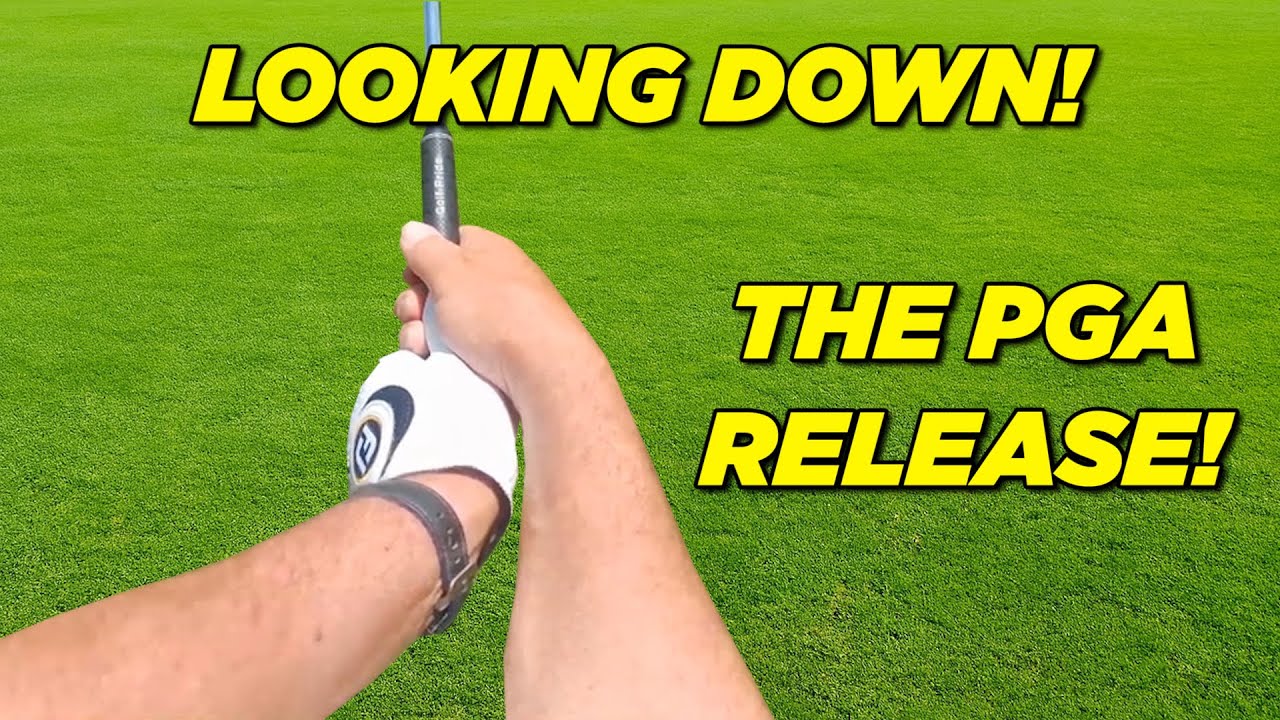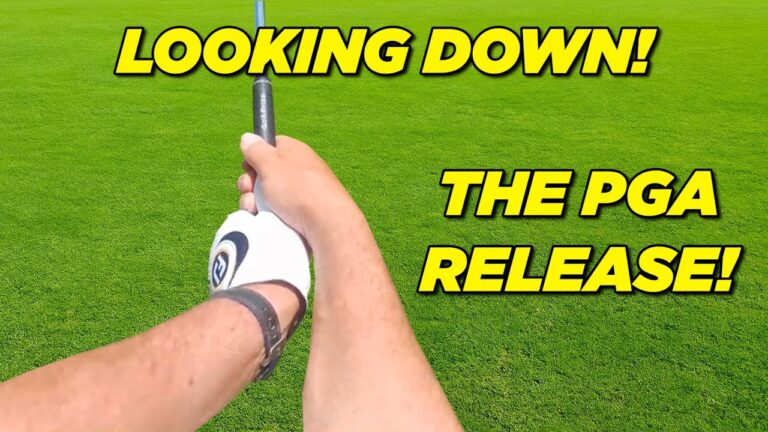 Want to revolutionize your golf game with effortless speed and precision? Mastering the modern PGA release could be your game-changer. This guide breaks down essential techniques like wrist flexion, grip adjustments, and legendary insights to elevate your swing efficiency.
Want to revolutionize your golf game with effortless speed and precision? Mastering the modern PGA release could be your game-changer. This guide breaks down essential techniques like wrist flexion, grip adjustments, and legendary insights to elevate your swing efficiency.
Table of Contents
- Understanding the Modern PGA Release and Why It Matters
- Move to a Stronger Grip for Easier Power and Consistency
- Master the Right Wrist Flexion and Left Wrist Extension
- Measure Your Lag and Shaft Lean for Optimal Impact
- Use the Magnet Move to Control Clubface and Ball Flight
- Incorporate Technology Like Hack Motion for Evidence-Based Improvement
- Learn from the Legends – Insights from Sam Snead and Butch Harmon
- Practice Drills to Rehinge Your Elbows and Improve Release
- Join a Golf School or Get Expert Coaching for Personalized Feedback
- Frequently Asked Questions (FAQ) About the PGA Release and Wrist Use in Golf
- Conclusion: Unlock Your Best Golf with the Modern PGA Release
Understanding the Modern PGA Release and Why It Matters
The modern PGA release is a dynamic technique that transforms how your hands and wrists function during the golf swing, improving swing speed and ball striking. This departure from the traditional “roll” method focuses on a specific wrist action for optimal control and leverage. Key components include right wrist flexion and left wrist extension, allowing the club to transition under the forearms post-impact. This technique reduces muscle strain, enhances ball compression, and boosts distance.
Move to a Stronger Grip for Easier Power and Consistency
Your grip is foundational to effective wrist movement in the golf swing. The evolving grip style among Tour pros emphasizes a stronger grip, where the left hand turns more to the right, promoting a squarer clubface through impact. This adjustment simplifies swing mechanics and fosters consistency, reducing the need for excessive clubface rotation.
Renowned players such as Rory McIlroy and Aldrich Podgier swear by their strong grips, using techniques like the “three knuckle grip” to attain accuracy and power. A strong grip supports the deeper hinge in your wrists, vital for enhanced shaft lean and efficient ball compression.
Master the Right Wrist Flexion and Left Wrist Extension
Swapping the traditional wrist roll for right wrist flexion and left wrist extension creates effortless power and precision. This wrist action maintains a squared clubface, supporting greater shaft lean and lag—a critical component for speed and power. Here’s a drill to help practice this motion:
- Adopt a stronger grip and focus on generating wrist flexion and extension throughout the swing.
- Use reflective surfaces or video feedback to monitor your wrist alignment post-impact.
- Engage in repetitive practice to imprint this technique into your muscle memory.
These adjustments reduce tension and enhance your natural ability to strike the ball cleanly and efficiently.
Measure Your Lag and Shaft Lean for Optimal Impact
A defining factor of elite ball strikers is optimal lag retention—the angle between the club shaft and lead arm during the downswing. Retaining this angle until the last moment unleashes stored energy, transforming into immense clubhead speed. Observations and tools like Swing Slap app or Hack Motion sensors are invaluable in aligning your technique with those of professional players.
Maintaining appropriate shaft lean is equally crucial, balancing between too little and excessive lean can make the difference between hits and misses. Modern tools allow you to measure and tweak these angles, fine-tuning your striking consistency.
Use the Magnet Move to Control Clubface and Ball Flight
The “magnet move” conceptualizes how to manipulate your swing mechanics to control impact conditions, including shaft lean and clubface stance. Adjustments in arm positioning and weight distribution are key here:
- Pull down with the right arm on your downswing.
- Shift your weight onto your lead side while maintaining proper wrist alignment.
- Practice hitting balls to hone the ability to hit draws or control slices naturally.
This maneuver maximizes the effective matching of wrist movement to desired ball flights and shot trajectories.
Incorporate Technology Like Hack Motion for Evidence-Based Improvement
Integrating technology like the Hack Motion sensor revolutionizes golf instruction and practice. By tracking the trail wrist angle, this device offers precise, real-time feedback on wrist movement throughout each swing phase.
Using advanced sensors to analyze wrist flexion and trail angles provides insights to refine your technique and achieve a powerful, effective swing. Such data-driven approaches align manual adjustments with empirical insights, expediting your progression toward swing mastery.
Learn from the Legends – Insights from Sam Snead and Butch Harmon
Learning from iconic golfers offers timeless insights into effective swing mechanics. Sam Snead, a prodigious hitter, emphasized the “snap” at the downswing, advocating for wrist engagement to maximize speed. Renowned coach Butch Harmon also highlights maintaining wrist angles through impact to enhance ball compression and accuracy.
Both advise avoiding premature wrist roll, showcasing the importance of wrist management in modern swing technique, reinforcing the essentials of focused wrist coordination for amplified effectiveness.
Practice Drills to Rehinge Your Elbows and Improve Release
Unlocking the natural motion of elbow “rehinge” is essential to improving wrist dynamics and enhancing swing efficiency. This practice overturns restrictive arm movements, inviting a fluid, flexible release:
- Initiate your swing as usual, facilitating natural elbow “rehinge” mid-swing.
- This action promotes the vital wrist flexion (right) and extension (left) for dynamic downswing completion.
- Document progress through video analysis, making iterative improvements over time.
With consistent effort, this drill restores freedom and power, revolutionizing your ball striking capabilities.
Join a Golf School or Get Expert Coaching for Personalized Feedback
Refine your newfound skills with targeted professional instruction, accelerating your journey to golf mastery. Golf schools and certified coaches play pivotal roles in offering tailored feedback through advanced analytics:
Access intensive training sessions at golf schools, incorporating video analysis, hands-on coaching, and strategic planning exercises. Equip yourself with personalized strategies to identify and address underlying issues, dramatically improving performance.
Frequently Asked Questions (FAQ) About the PGA Release and Wrist Use in Golf
Q1: What exactly is the PGA release in golf?
The PGA release describes effective hand and wrist motion through impact and follow-through, ensuring optimal clubhead speed and control.
Q2: Why is a stronger grip recommended for better wrist action?
A stronger grip maintains clubface alignment longer, reducing the need for excessive rotation, and enhancing swing consistency.
Q3: How can I practice the right wrist flexion and left wrist extension?
Observe your wrists post-impact in mirrors or video, focus on the correct flexion/extension motions to streamline your swing mechanics.
Q4: What role does lag play in the PGA release?
Lag retention optimizes energy transfer, elevating clubhead speed and shot quality.
Q5: Can technology like Hack Motion sensors really help improve my release?
Yes, they offer crucial real-time data, enhancing wrist control and aiding technique refinement.
Q6: How do I know if I’m flipping or rolling my wrists incorrectly?
Video analysis or wrist sensors can reveal improper wrist motion, guiding corrective actions.
Q7: Is it possible for older players to benefit from this wrist release technique?
Yes, it’s particularly advantageous for older golfers, facilitating effortless power and reduced strain.
Conclusion: Unlock Your Best Golf with the Modern PGA Release
The modern PGA release is a transformative technique possible for all golfers, regardless of age or skill level. Through focused grip adjustments, strategic wrist positioning, and leveraging technology, you can achieve substantial improvements in your golf game. Ground your approach in informed practice and expert guidance, and experience the momentum of newfound distance and precision in your shots. Adopt these principles with a commitment to consistent refinement, realizing your potential for exceptional golf performance.


0 Comments